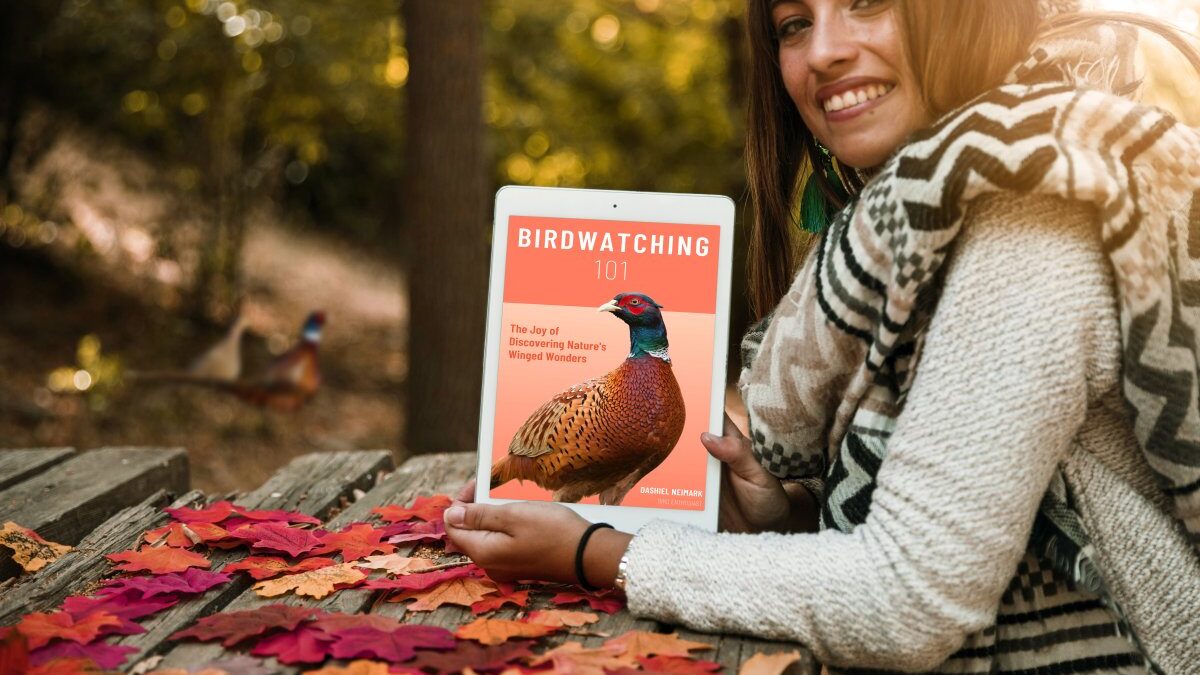Birdwatching 101 by Dashiel Neimark
The Joy of Discovering Nature's Winged Wonders
An introductory book to birdwatching that covers all that basics you'll need to know to get started as well as many great birding facts.
Birdwatching 101: A Beginner's Guide to Birdwatching is an comprehensive and easy-to-follow guide for those just starting their journey into the fascinating world of birdwatching. This book covers a range of topics essential for beginner birdwatchers, including the types of birds and their classification, birding equipment, bird identification techniques, bird migration patterns, bird-friendly habitats, popular birdwatching destinations, birdwatching etiquette and conservation, bird behavior and social structures, bird habitat and territory, and bird photography tips.
The book also covers important aspects of birdwatching such as bird physiology and anatomy, the role of birds in their ecosystem, bird conservation and protection efforts, bird habitat loss, and the history and evolution of birdwatching as a hobby and science. With detailed chapters on coastal birdwatching and seabird identification, participating in citizen science bird monitoring programs, and bird migration, “Birdwatching 101” offers a comprehensive look into the world of birds and birdwatching.
Whether you are a seasoned birdwatcher or just starting out, Birdwatching 101 is the perfect resource for developing your skills and knowledge about birds and birdwatching. With practical tips and easy-to-follow instructions, this book is designed to make birdwatching accessible and enjoyable for everyone. So grab your binoculars and start your birdwatching journey today with Birdwatching 101.
AmazonExcerpt from Birdwatching 101 © Copyright 2023 Dashiel Neimark
Birds can be found all over the globe as a wide range of feathered creatures. Birds come in many sizes and shapes, from tiny hummingbirds all the way to large ostriches. They play an important role in the global ecosystems. Birdwatching is a great way to learn about the various types of birds and their classifications.
Classification of Birds
Birds can be divided into different groups according to their behavior, physical characteristics, and evolutionary relationships. The taxonomic classification system is the most popular for bird classification. It is based upon Linnaeus’ binomial nomenclature. This system gives each bird species a unique scientific name that is made up of two parts: the genus, and the species.
A hierarchy of categories is used to taxonomically classify birds. The most general category is the first and then the most specific. These are the major categories of this classification system:
Kingdom – Animalia
Phylum – Chordata
Class – Aves
Order – (e.g. Passeriformes, Anseriformes)
Family – (e.g. Corvidae, Fringillidae)
Genus – (e.g. Corvus, Carduelis)
Species – (e.g. Corvus corone, Carduelis spinus)
Each category provides more information about the bird while the species name gives the most detailed information. This system allows birdwatchers and scientists to quickly identify individual species and to communicate with them.
Types of birds
There are more than 10,000 species of birds worldwide. They are divided into different groups according to their behavior and physical characteristics. These are some of the most popular types of birds:
- Waterbirds: This category includes geese and swans as well as pelicans. These birds are well-adapted to life around water, and can be found near rivers, lakes, and oceans. Many waterbirds are equipped with waterproof feathers and webbed feet, which allow them to swim and dive. They eat fish, mollusks and aquatic plants.
- Landbirds: This category includes songbirds and gamebirds as well as perching birds. They can be found in many habitats, including deserts, forests, and grasslands. They eat seeds, fruits, insects, small mammals, and other small animals. Their strong feet and sharp claws are what distinguish them. They can perch on branches to forage and have strong feet.
- Raptors: These birds include hawks and falcons as well as eagles and owls. They feed on small mammals and birds of prey. They are distinguished by their powerful beaks and sharp talons, which they use for capturing and killing their prey. They are able to fly at high speeds and have great vision.
- Waders: This category includes cranes and storks as well as herons and flamingos. They have been specially designed to live in shallow water or mudflats. Waders are characterized by their long legs and sharp bill that they use for digging in the mud to find food. They eat fish, crustaceans and small aquatic animals.
- Seabirds: These birds include penguins and gulls as well as albatrosses and pelicans. They have been specially designed to live at sea and eat fish and other sea creatures. Seabirds are able to swim and dive in water thanks to their waterproof feathers and webbed feet. Salt glands help to remove excess salt from the bodies of seabirds.
Understanding the differences in bird species and their classifications is essential to birdwatching. This allows birdwatchers to recognize and appreciate individual behaviors and characteristics of bird species. It doesn't matter if you are an expert or a beginner birdwatcher. Understanding the classifications of birds will help to enhance your enjoyment of these amazing creatures.
My profession is online marketing and development (10+ years experience), check my latest mobile app called Upcoming or my Chrome extensions for ChatGPT. But my real passion is reading books both fiction and non-fiction. I have several favorite authors like James Redfield or Daniel Keyes. If I read a book I always want to find the best part of it, every book has its unique value.







